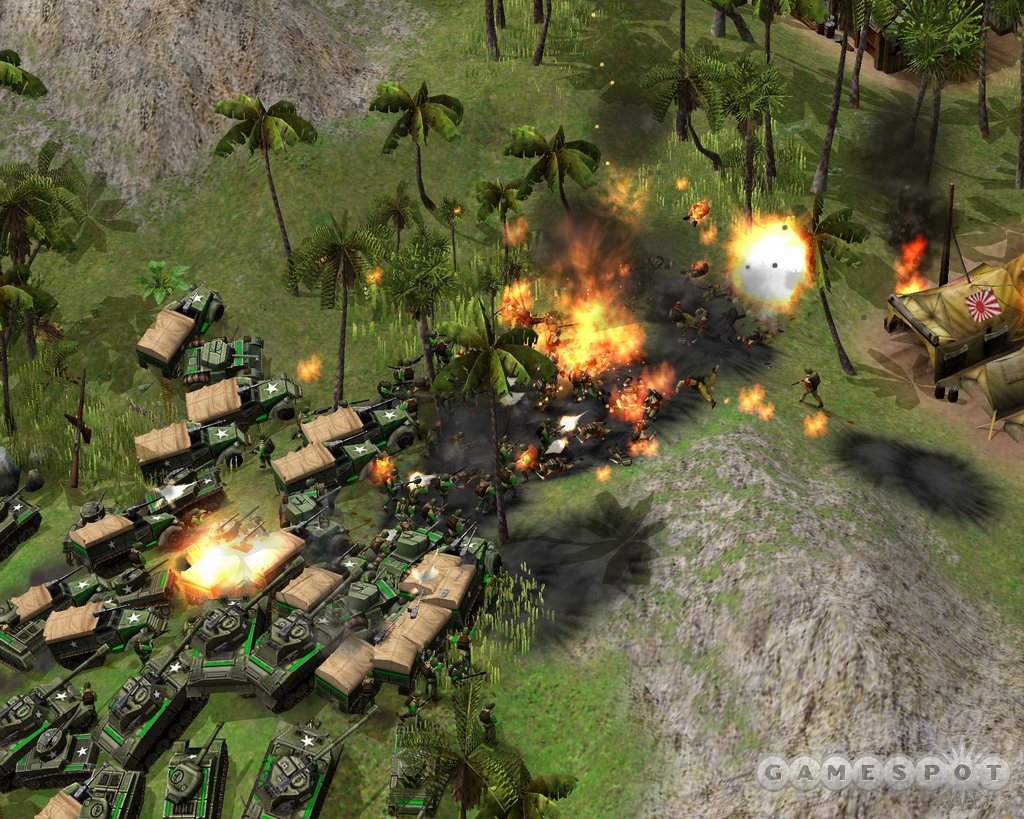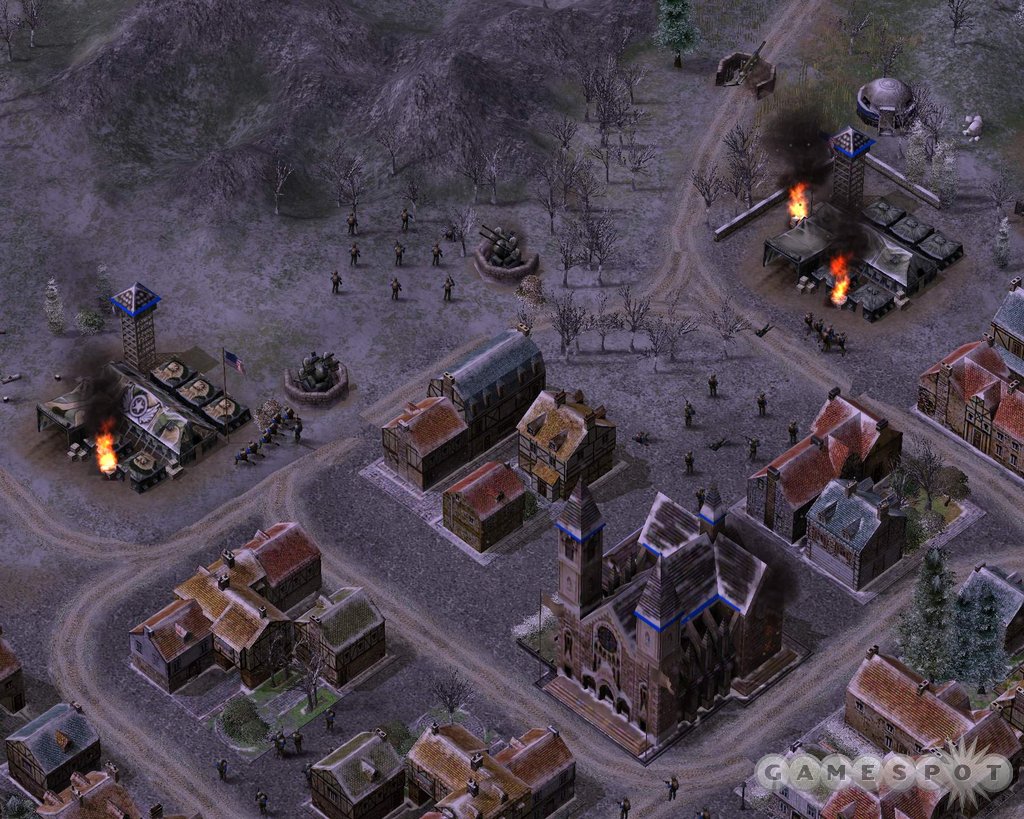Axis & Allies Designer Diary #1 - Balancing the Bad Guys and the Good Guys
Lead designer Brian Wood discusses what went into making sure the Axis was balanced against the Allies in this recently completed World War II strategy game.
While typical real-time strategy games force you to gather resources, build buildings, and crank out an army quickly enough to beat your opponents to the punch, newer games are introducing new features and options. Consider the recently completed Axis & Allies from TimeGate Studios, which ships next week. The game will combine elements of the classic World War II-themed board game with traditional real-time strategy mechanics and a number of unusual elements, like supply borders and generals with exceptional, tide-turning abilities that can be used in battle. But will Axis & Allies be historically accurate? It can't be perfectly true to history, because the game has two playable sides--so the Allies can't always win, even though they were historically victorious. TimeGate has gone to great lengths to make sure both playable sides are balanced and worth playing. Lead designer Brian Wood explains.

Putting the "Axis" in Axis & Allies
By Brian WoodLead Designer, TimeGate Studios
From the get-go, it was very important to us that Axis & Allies keep true to its title, by letting players control either the Allies or the Axis in equally compelling campaigns. A home-team bias might lead us to want to design the game strictly from an Allied perspective, letting players experience historically accurate WWII scenarios as either an American or a Russian general. Nevertheless, part of the appeal of the board game and the complexity of our real-time strategy take is seeing the war from both sides. There is already a rich library of written literature of "what if" scenarios, in which historians have proposed that if Germany or Japan had made different choices, the state of the world might be a very different from it is today. We cover these possibilities in the game in two ways: through the Axis campaign and through the "world war" mode.
The Axis campaign takes many of the "what if" scenarios and lets the player engage them from the perspective of the Germans and Japanese. As the Axis campaign reveals, relatively minor strategic changes or chance differences could have led to radically different outcomes at key junctures in the war. For example, consider the invasion of France. German intelligence indicated that the Allies were going to take the shortest possible channel crossing and invade at Calais. Therefore Hitler sent some of his best commanders to secure that area against the Allied landing. As we now know, their intelligence was misguided and the Allies landed on the infamous beaches of Normandy. In the Axis campaign of Axis & Allis, Germany receives accurate intelligence and positions the bulk of its forces at Normandy. This makes for a very exciting and compelling mission, particularly because the player sees the historical battle from the other perspective in the Allied campaign.
There were several problems [TimeGate] had to face when choosing which missions to create for the Axis campaign. First, at what point should we turn the war in favor of the Axis? What impact might earlier successes have on the later missions? We decided that major changes had to start very early in the campaign to change the overall German strategy. For example, consider the Battle of El Alamein, the second Axis campaign mission. If Rommel had not gotten sick, or if Montgomery had never been placed in charge of the British forces in North Africa, the Germans might have broken through the British lines and moved on to capture several of the major oil fields in the Middle East. If they had, they would have had the oil to fuel much larger armies across multiple fronts. Could they have taken Moscow? Historically, the Germans were stopped only 30 miles from Moscow in Operation Barbarossa, in part because German forces were diverted to secure the Caucasus oil fields. If they had struck at Moscow and captured it, the war could have had a very different outcome.
The other aspect of the game that lets the player explore these "what if" scenarios is the world war mode. This mode lets the player take part in a strategic turn-based game in which battles can be resolved via real-time strategy missions or by the roll of the die. While this mode isn't an exact replica of the way the board game works, it was inspired and influenced by the original game in many ways. We wanted to capture the importance of the economic factors (which are often left out of WWII games), as well as to encompass the global aspect of the board game.

We think a lot of players will enjoy the world war mode the most because of its dynamic gameplay and replay value. You can try your hand at Germany and change the Axis' overall global strategy. While the alliances are permanently set on both sides, your individual military strategy is completely up to you. Maybe you'd like to take all of Europe, eliminate the British while holding off Russia, and then invade the United States? You can even play as Japan and ignore a major part of the Pacific and help the Germans overrun Russia. Suddenly, it is the Russians who are now faced with a two-front European theater.
Overall, Axis & Allies lets players experience World War II in a variety of different ways, from playing as either the Axis or the Allies, to controlling the world or a small city, to commanding divisions and regiments of troops, to bringing their strategies to bear against the computer or other players online.
Got a news tip or want to contact us directly? Email news@gamespot.com
Join the conversation